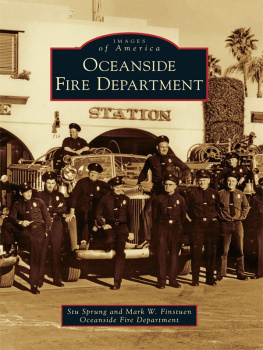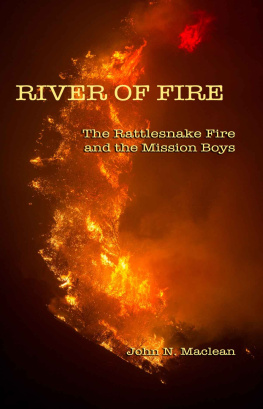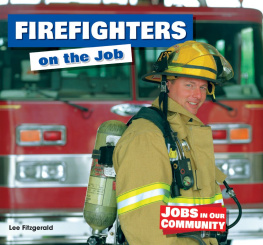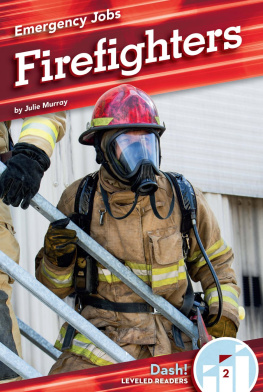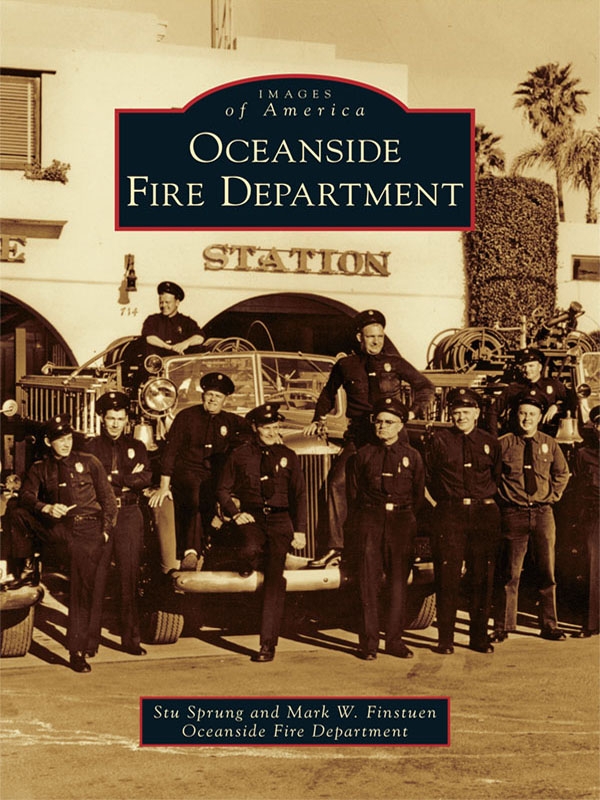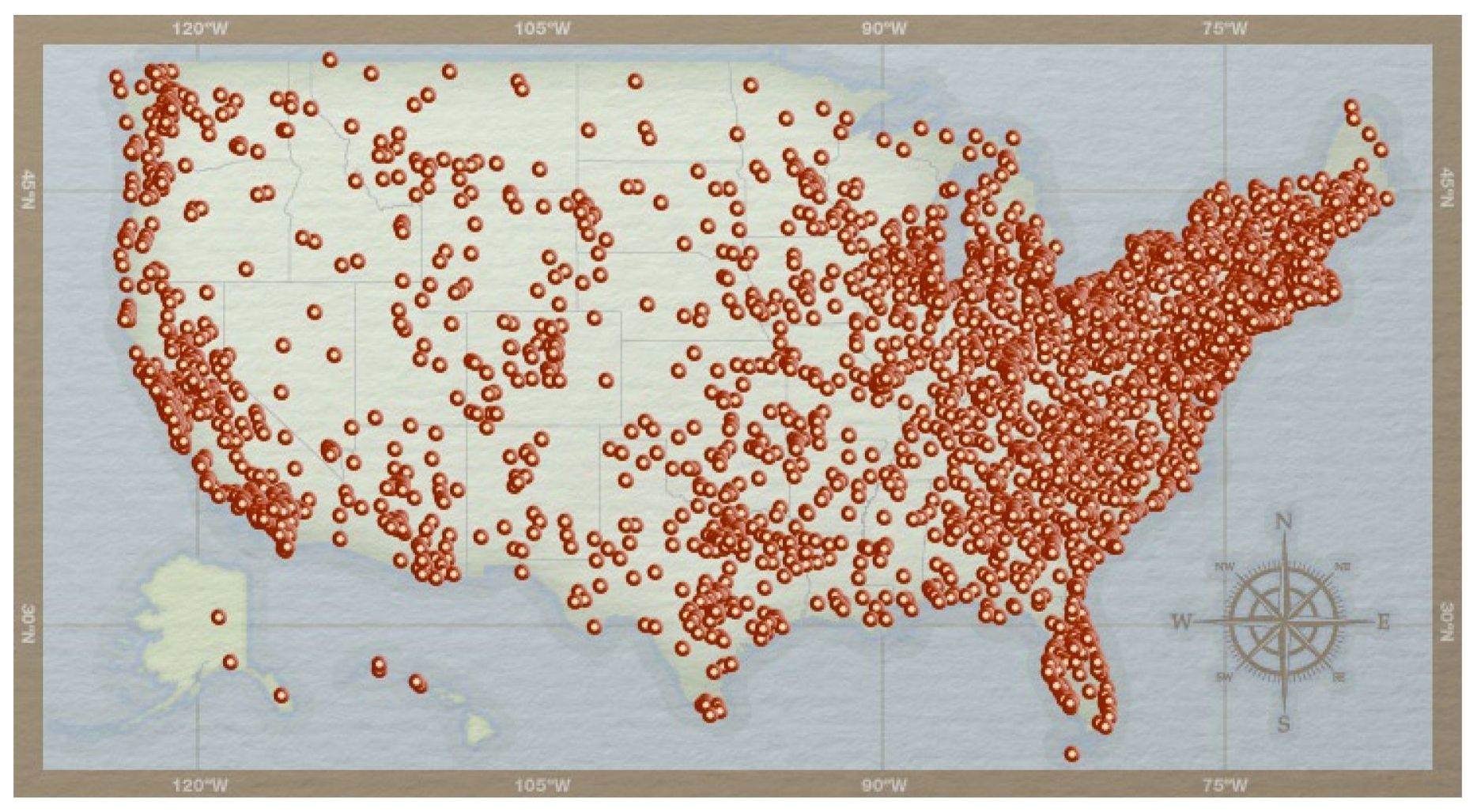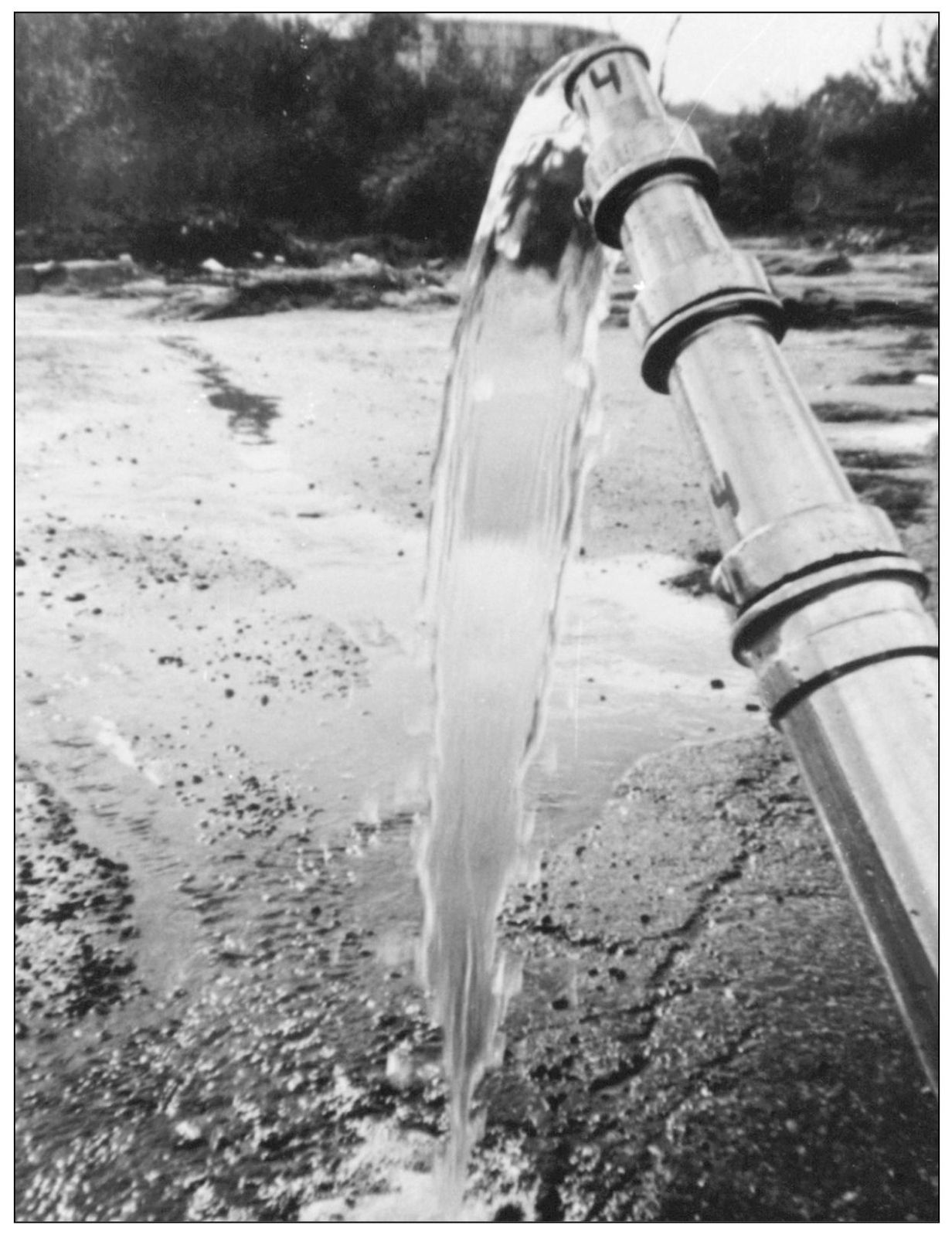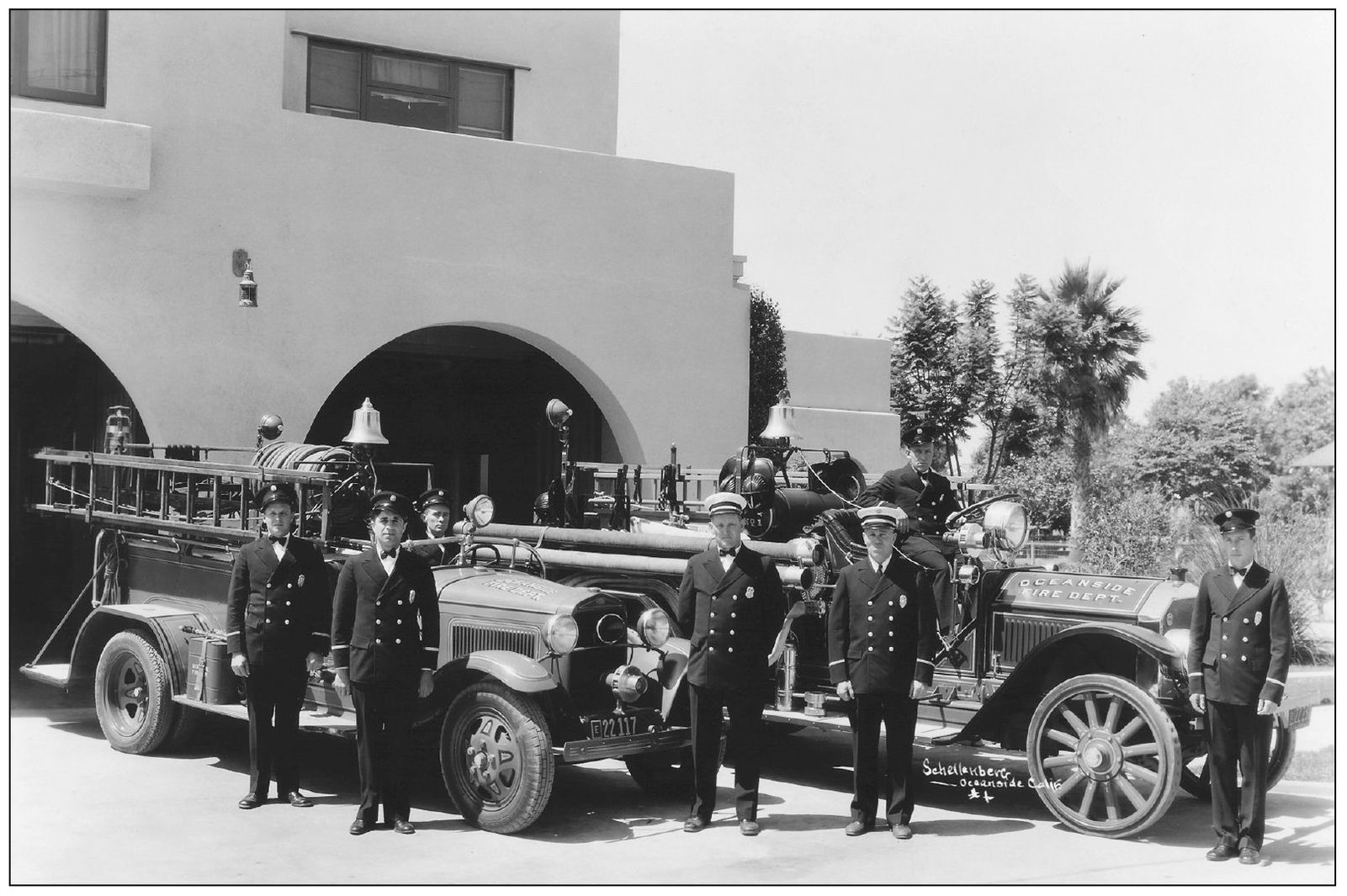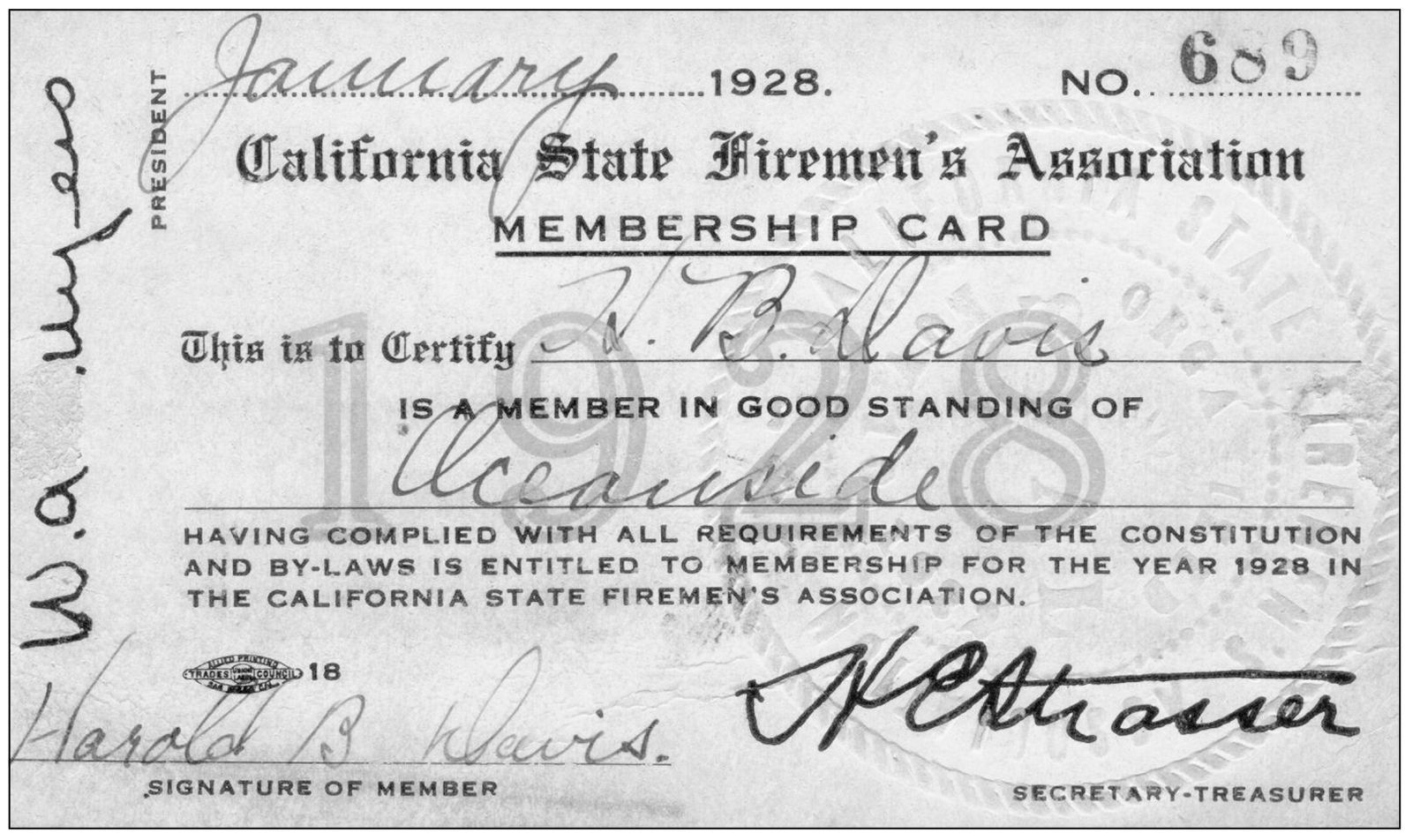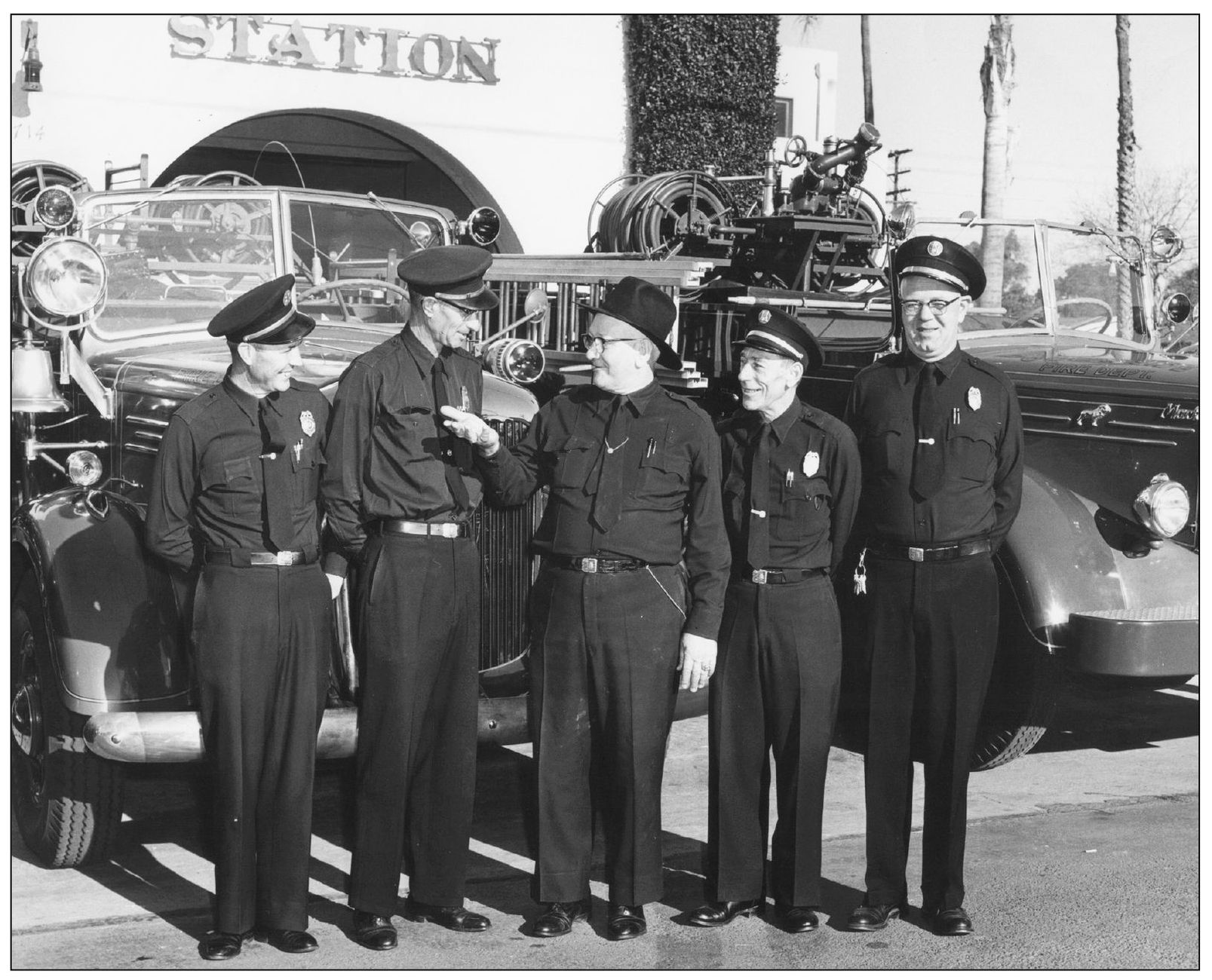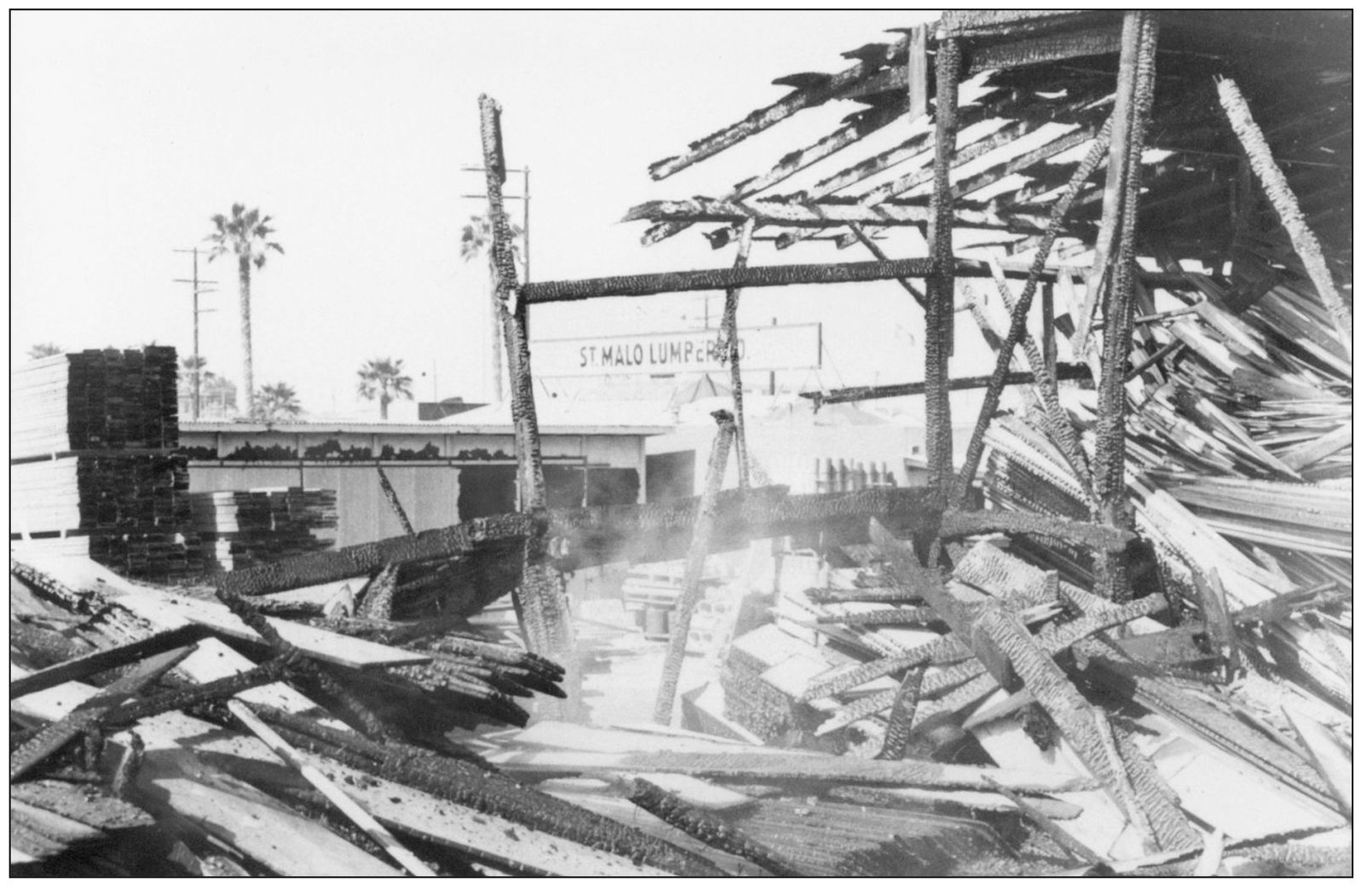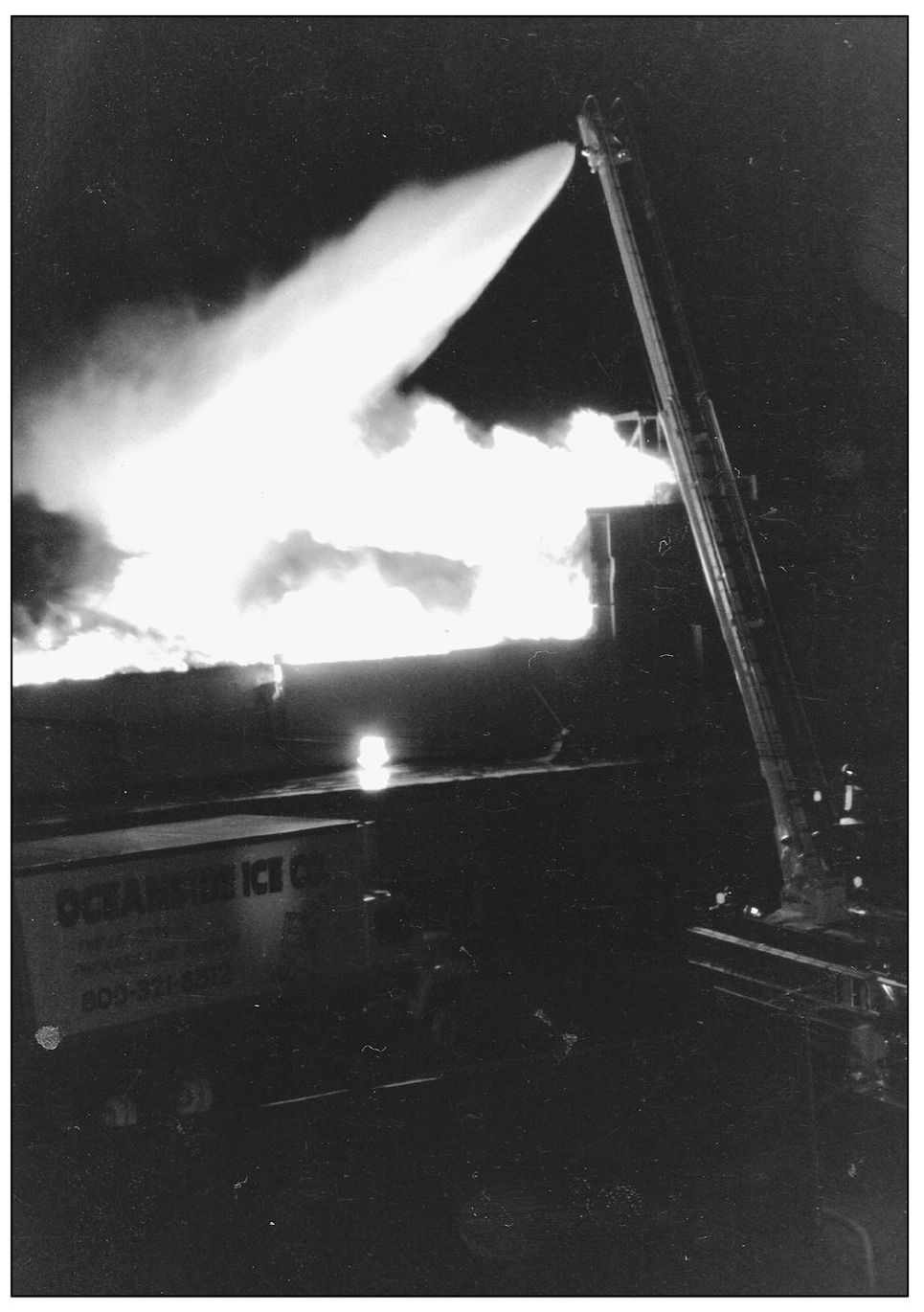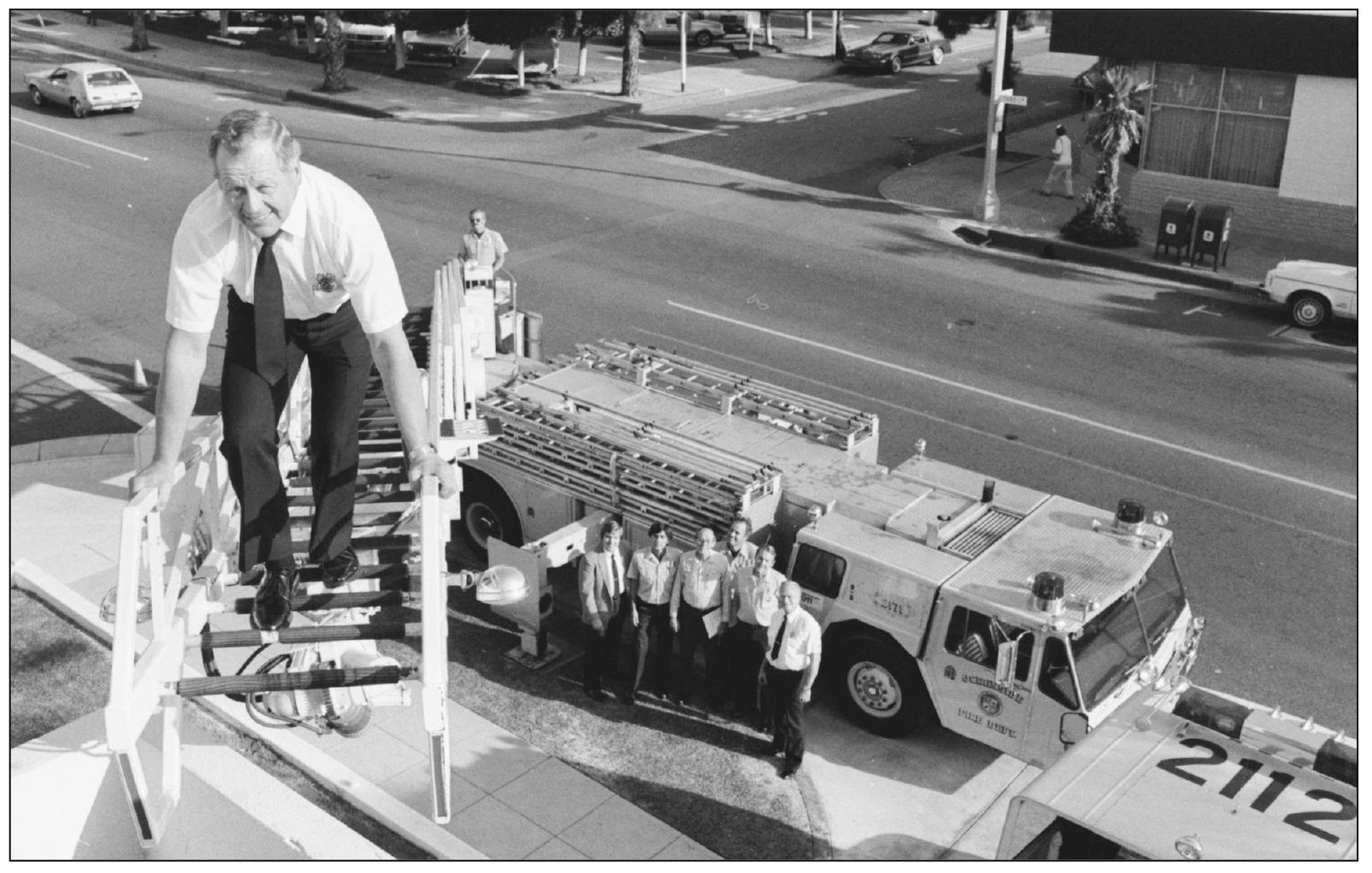One
EVOLUTION OF A LEGACY
Oceanside Fire Company No. 1 was first established in 1887 by the citys founding fathers and citizens. At the time, the city of Oceanside was nothing more than a western outpost occupied mostly by settlers. With no experience and very few surrounding resources to draw upon, those settlers pioneered what has evolved into one of the most progressive and community-active fire departments in the United States.
The first modern era in the history of the OFD started in 1929 with the building of the citys first fire station, which was located at what was then 714 Third Street. Pictured above are, from left to right, R. J. Bullard, H. B. Davis, John Todd, fire chief Walter Johnson, assistant chief Lee Jennings, Gus Millam, and Ernest Taylor. Eighty years later, that station still serves as Oceanside Fire Station No. 1 on 714 Pier View Way. Pictured below are, from left to right, firefighter paramedics (FF/PM) Felix Urrutia, Robert Castillo, Dan Karrer, Steven Choi, Capt. Andy Stotts, engineer Tony Chapman, Capt. Greg deAvila, Ryan Robinson, Rocky Rehberg, Jessamyn Specht, Mike Farnham, and Geoff Merzanis.
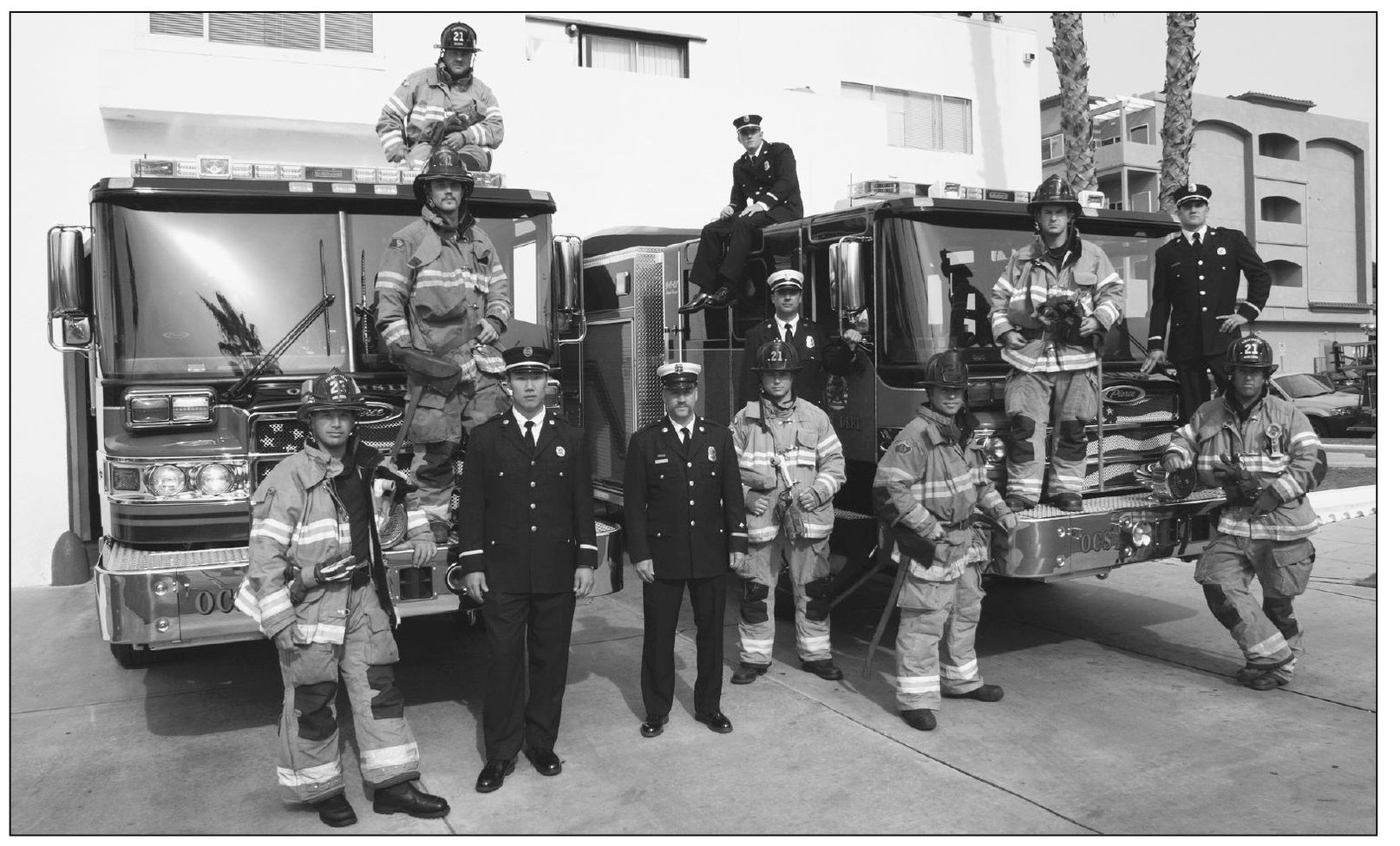
The Oceanside firefighters have a proud history of being involved in the community. Over the years, they have placed priority on the safety of Oceanside residents through their advocacy of adequate fire services. The California State Firefighters Association (CSFA) was the first organization that allowed fire departments to unify with the goal of improving fire services throughout California. In 1923, the Oceanside Fire Department was the second department in the state to enroll with 100-percent membership. The CSFA is still the largest fire-service organization in California with 24,000 members. (H. B. Davis family.)
On September 17, 1931, firefighter Harold Davis holds on to the face valve for a new medical device called an inhalator. This device was designed to provide respiratory assistance to individuals suffering from shortness of breath or cardiac arrest. Though an organized nationwide Emergency Medical Service system was still at least 30 years from being established, the OFD was one of the first to provide care with the bulky lifesaving devices to Oceansides citizens. (H. B. Davis family.)
In 1929, Oceanside promoted Walter Johnson (center) as the citys first paid fire chief. With his signature cowboy hat, he became a symbol of progress by escorting the OFD out of the Wild West and into the 1950s. He is flanked (from left to right) by John Guest, Dick Trotter, Everett Stephens, and Rollin Calhoun. Pictured below, modern-day fire chief Darryl Hebert (second from left) stands with the OFD Fire Academy cadre.
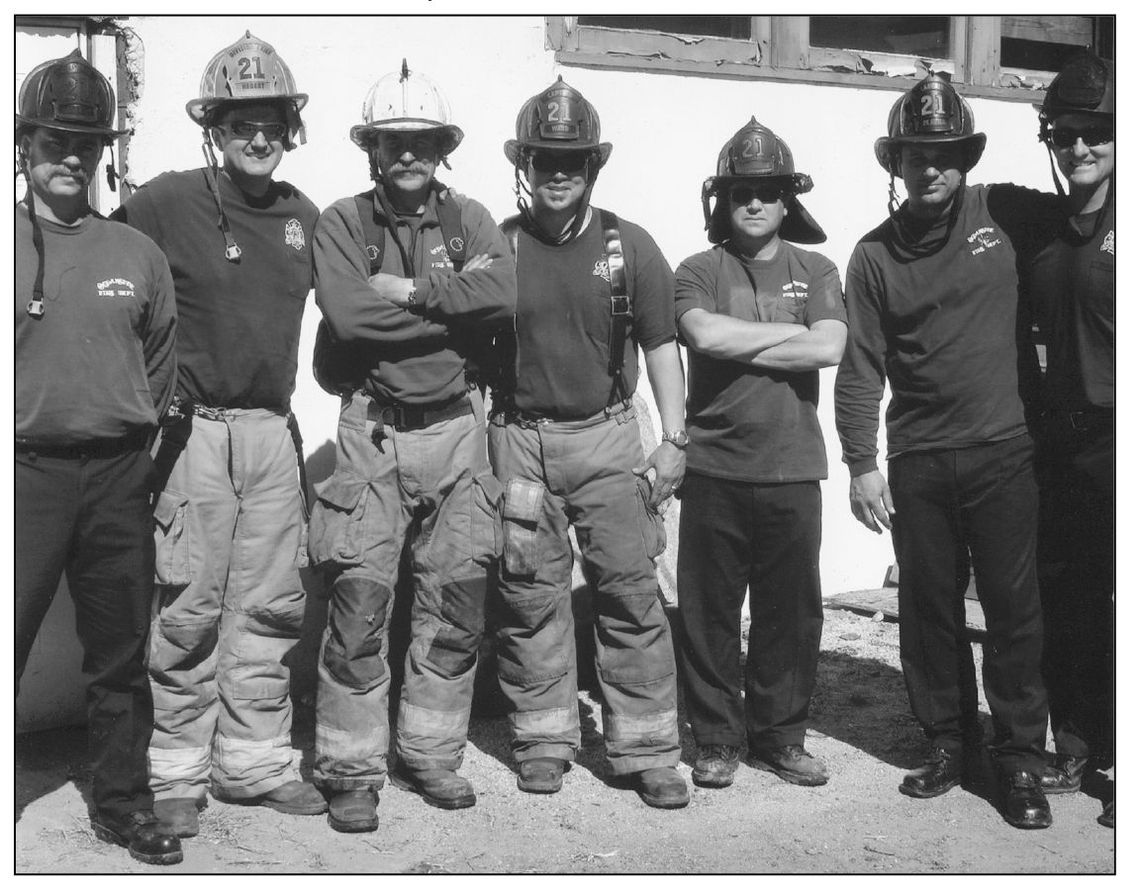
The evolution of the OFD saw some of the largest and most tragic fires in the citys history. At the Saint Malo Lumber Yard Fire (above), Capt. Lloyd Seal lost both of his legs and a good-samaritan bystander was killed trying to pull him from an electrified fence. In 1987, the Ice House Fire (right) was also one of the most interesting, as it burned for hours without being affected by thousands of gallons of water that were being poured into it. It turned out that the walls of the building were filled with sawdust as insulation, which gave firefighters the impression that no amount of water would ever extinguish the fire. (Above, Faumuina family.)

